I’ve been a fan of Taralli for years, a circular Italian cracker that’s sometimes flavored with fennel seeds, black pepper, or spicy dried chiles. I love them, and while I’m of the mind that you don’t have to make everything you eat from scratch, if you’ve got an itch to make something, then it’s time to scratch it.
I was intrigued when I got a copy of Dolci! American Baking with an Italian Accent by Renato Poliafito. Bakers are a close-knit group, and I met Renato years ago when he was the co-owner of Baked bakery in Brooklyn. Baked was known for its classic American desserts, and when he and his business partner sold the business, it gave Renato a chance to open his own bakery, Ciao, Gloria, and to explore Italian and Italian-American desserts.
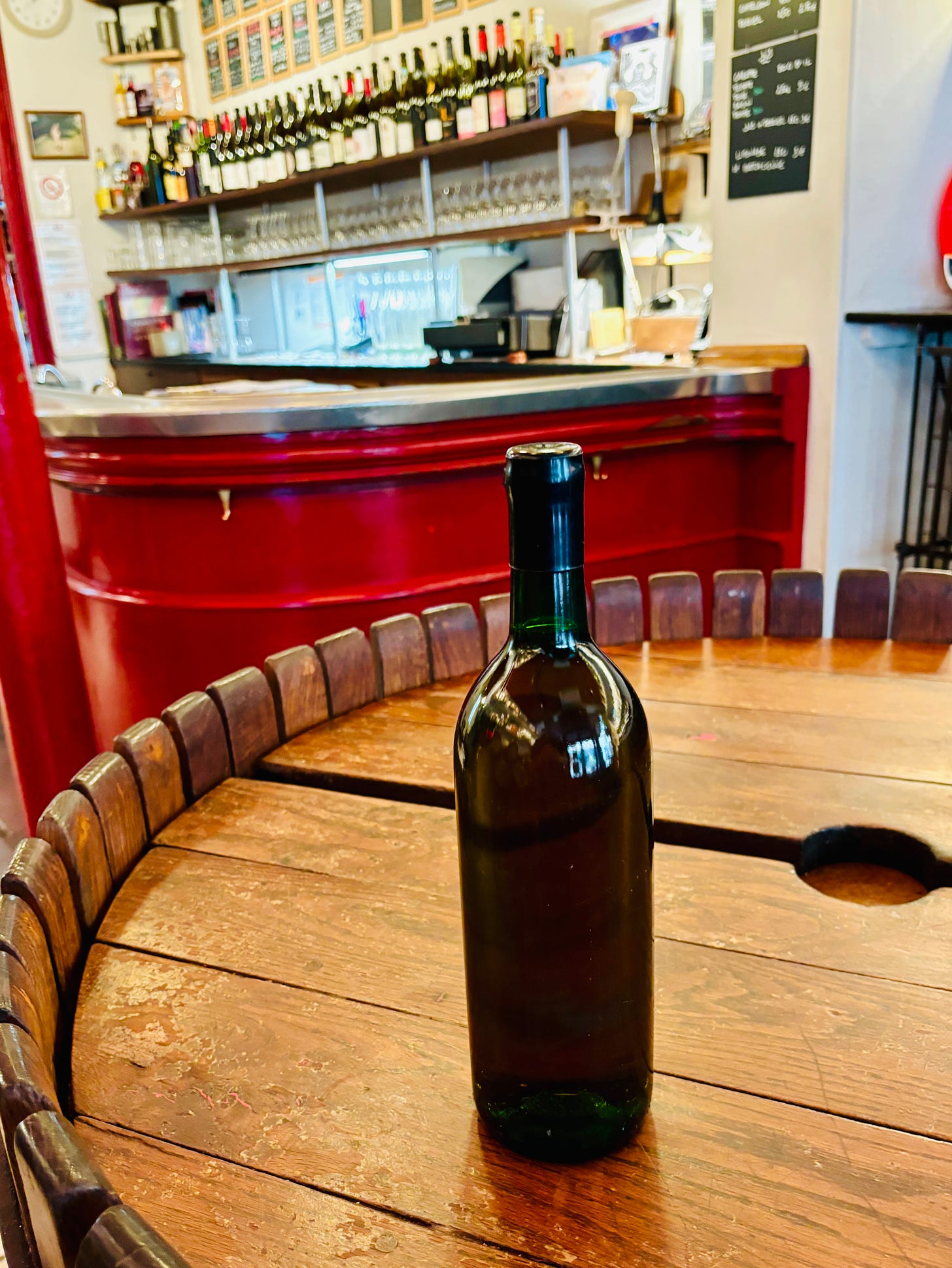
Renato’s father was born in Sicily and immigrated to the United States, arriving by boat in New York, with his wife and children joining him once he had settled. Renato was the youngest child, born in New York, but he spent many summers in Italy with his family. In the introduction to his book, Renato says, “Although New York is my home, there’s a small piece of me that knows I’m from somewhere else.”
His idea of opening a bakery to explore his Italian and Italian-American roots paid off brilliantly, and the bakery is always busy. The reason? The excellent pastries, which range from egg sandwiches in the morning with crispy prosciutto, provolone, and Calabrese aïoli, to all-day treats like Tricolor Bars (a riff on Rainbow cookies), crostatas, limoncello-pistachio tarts, and amaretto-caramel brownies. In Dolci!, Renato offers up even more, including torrone (almond nougat), panforte, a coffee-walnut liqueur shakerato (a cold, shaken drink), and “perfect grissini,” slender Italian breadsticks.
I’d gotten a preview of the book for a quote, which I enthusiastically gave when I read through it, and was happy to finally have the book in my kitchen, and I got going on the Cheddar Taralli recipe, his inspiration coming from extra-cheesy Cheez-It crackers.
Cheeses from the U.K. are kind of known around here, but like wine, there’s so much cheese made in France, that there aren’t a lot of imports*. But you can buy cheddar in the supermarché. I thought “characterful” might be one of the, um, borrowed English words and phrases in French that don’t quite hit the same mark in English, such as a “smoking,” (which is a tuxedo), “très people” (which means trendy and a bit sensationalist), and a new one I just learned, a Bob, a hat with a wider brim, which I learned about because the Olympic volunteers were issued them, and they became a hot fashion item during the games.
But I looked it up, and “characterful” is a word, which means “having a lot of character” (duh!**), which makes sense. It also makes sense that when cooking with wine, as you do when making the Taralli dough, use cheap wine. I used rosé that I bought at Le Baron Rouge, where you can bring your own bottle or consigne (leave a deposit) for one of theirs, and costs €4,50 per liter.
Being respectful of other cultures’ cuisines is tricky business. I’ve seen quite a few Caesar Salads in France with tomatoes and fried chicken, and there was a recipe for chili in a book on Spanish cuisine that I saw here too.
I adhere to the Gaston Lenôtre idea that you’re welcome to change anything, if you make it better. And adding cheddar to these crackers made them different and, in some ways, better. Kind of like how I love the thin pizzas sold from the fornos (bread bakeries) in Rome with sliced potatoes, olive oil, and rosemary, but I also really like pepperoni pizza in the States. Both make the world a better place.
These crackers contain a lot of cheddar. To be honest, after I made the dough, when I pulled the first batch out of the oven, I wanted to say, “Hey, Renato…where’d all that cheddar go?” They didn’t look very cheesy, but when I took a bite, I ate my words.
These cheesy crackers were a revelation.
Cheddar Taralli
Adapted from Dolci! by Renato Poliafito
The recipe calls for a stand mixer fitted with the dough hook. I haven’t tried making these without a mixer, but you could make it by hand, mixing the dough in a medium bowl, then kneading it on the countertop for 5 minutes or so until smooth.
These do take some time to roll and shape, but the rolling and shaping is very easy…and fun! If you have someone helping you, it’ll go twice as fast. Although the book said to roll all the crackers out first, and then parboil them, I did mine in batches. Making these is pretty simple, but there are a few steps. I added some additional tips in the instructions, to help you along the way.
500g (3 1/2 cups) all-purpose flour
350g (12 ounces) sharp cheddar (if cheddar isn’t available, you can use aged gouda or semi-aged mimolette)
2 teaspoons fine sea salt
1 teaspoon paprika, smoked or sweet
120ml (1/2 cup) extra-virgin olive oil
160ml (2/3 cup) dry white wine or rosé
In the bowl of a stand mixer fitted with the dough hook, mix together the flour, cheddar, salt, and paprika. Heat the olive oil in a small saucepan until it’s hot and shimmering. Add a little of the hot oil to the ingredients in the mixer bowl, stir at low speed, then add a little more oil, stirring, until all the oil is added. While the mixer is running, gradually pour in the wine, stopping the mixer midway to scrape down the sides of the bowl to ensure that everything is getting mixed in.
Turn the mixer to medium and knead the dough until the dough is very smooth and supple, about 5 minutes.
[Tip: If your dough is looking dry and not coming together midway during mixing, add another tablespoon of wine.]
Wrap the dough tightly in plastic wrap, or your favorite eco-friendly alternative, and let rest at room temperature for 30 minutes. While the dough is resting, line two baking sheets with parchment paper. Line another one with paper towels. Clear off some counter space to roll the Taralli out.
Preheat the oven to 375ºF (190ºC).
Fill a wide saucepan halfway with water and add some salt to it, as if you were salting water for pasta. Bring it to a boil. Unwrap the dough and pinch off a piece of dough about the size of a small walnut and roll the dough on an unfloured countertop until it’s about 4 inches (10cm) long. Loop it around your finger in a circle, or whatever feels easiest for you to make a circle, and pinch the end closed a little bit. With your fingers inside the circle, pull it open just a little more, then set the Taralli (or Tarallo?) on the counter and go on to the next one.
When you’ve got about 15 Taralli, drop them into the pan of water. When they float to the top, after 1 1/2 to 2 minutes, with a slotted spoon or flat mesh strainer, remove the Taralli and put them on the paper towel–lined baking sheet in a single layer to drain. Sprinkle with flaky sea salt, then go on and do the same, rolling, shaping, and parboiling the next batch of 15.
When the Taralli on the baking sheet from the first batch are cool enough to handle, place them on one of the parchment-lined baking sheets about 1/2-inch (1,25cm) apart.
[Tips: If you leave the Taralli on the paper towels too long, they’ll stick a bit. I was able to easily remove any pieces of paper, but I found that taking them off the paper towel–lined baking sheet as soon as they were cool enough to handle and putting them on the parchment-lined baking sheet ensured they didn’t stick.
I changed the salted water midway through parboiling the Taralli as it was quite cloudy and a little viscous from the flour.]
When you’ve got enough Taralli on a baking sheet, start baking them, rotating the baking sheet in the oven midway through baking for 30 to 35 minutes, until golden brown and they feel relatively firm when you squeeze one. Remove from the oven, let cool for 5 minutes, then transfer the Taralli to a cooling rack.
[Tip: The original instructions said to bake for 30 to 40 minutes, “until light golden brown and crisp.” Mine looked like they were done around the 25-minute mark, but they really do need to be baked at least to the 30- to 35-minute mark to be done.]
Bake the rest of the Taralli the same way. Let cool completely before serving.
Storage: Taralli will keep in an airtight container for up to one week.
[Tip: Mine softened a bit by the following day likely because we are having a humid spell here, and my airtight container wasn’t as airtight as I thought, although they were still delicious. I did ask Renato about that and he said they weren’t meant to be as hard and dry as store-bought taralli, but wanted them to taste as cheezy as possible. He suggested putting them back in the oven the following day for a bit if they lose their crispness.]
*While French people may not know about American artisan cheeses, at the U.S. Embassy July 4th fête in Paris, an event that includes many foreign diplomats, the French guests were clustered around the table of cheeses from Jasper Hill Farm from Vermont, wolfing them down and asking for more.
**I have a long-running joke with French friends about the word fortitude, which I used once, and they told me that it wasn’t a word in French. I was surprised because certitude (certainty), plénitude (fullness), and rectitude (straightness) are. So why not fortitude, for strongly?
I didn’t bother looking it up at the time—I never in my wildest dreams figured that I’d wind up living somewhere where the subject of grammar and verb conjugations (and, inevitably, taxes) would be frequent dinner party discussions—but I read a poem in French that contained the word fortitude, which I now use as proof that it is a word, and I use it freely around them now…and when I use it, I emphasize it on purpose.





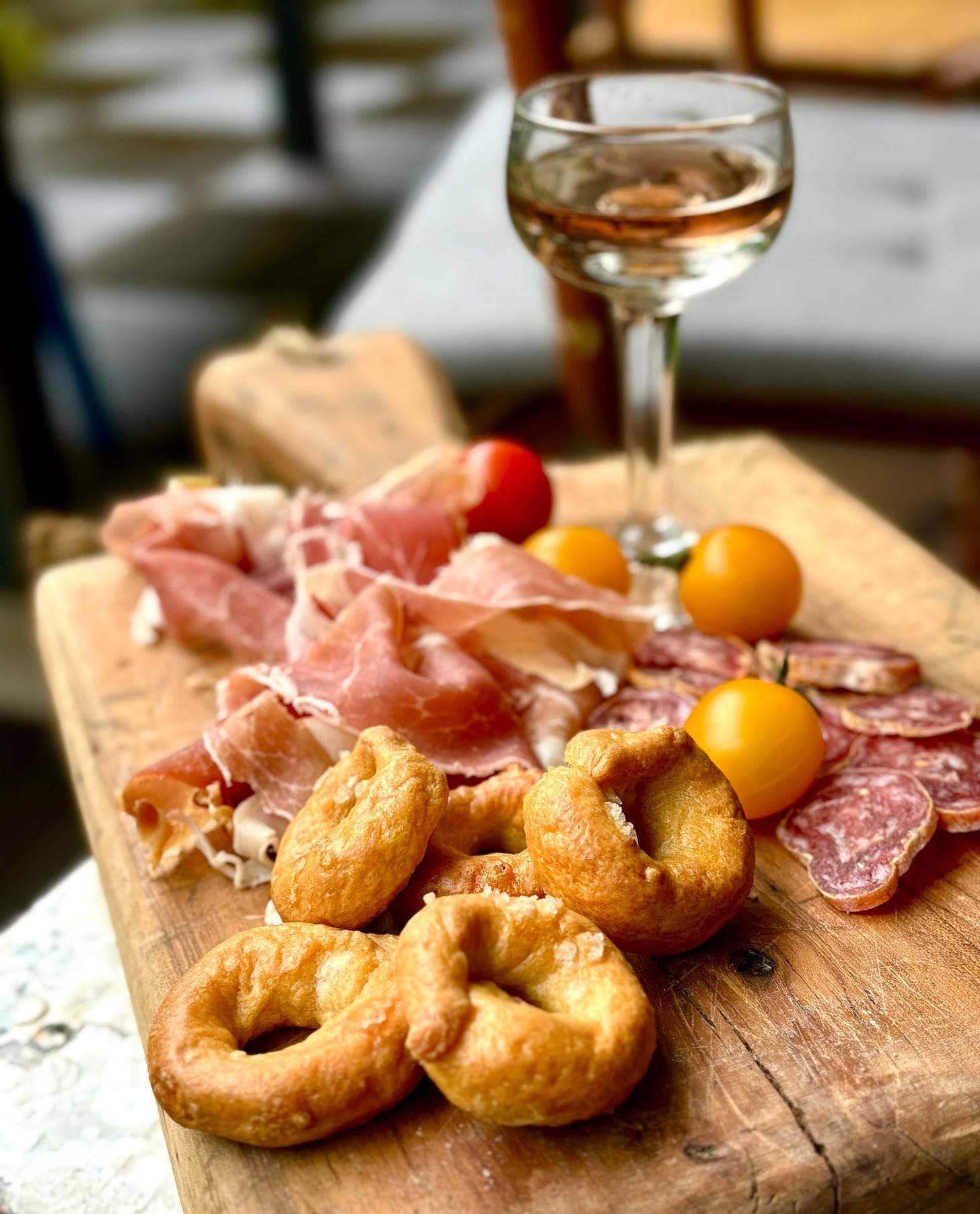
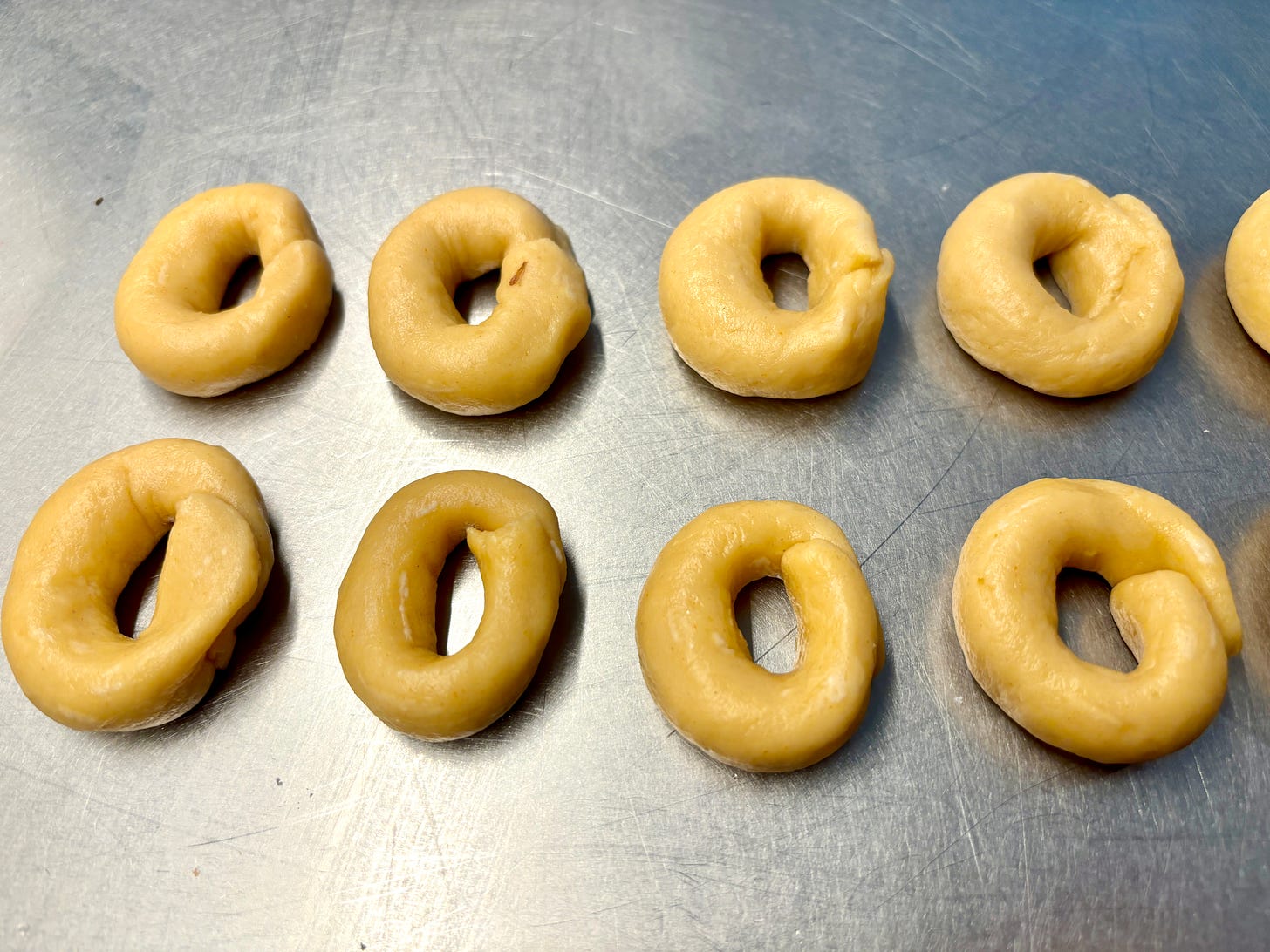
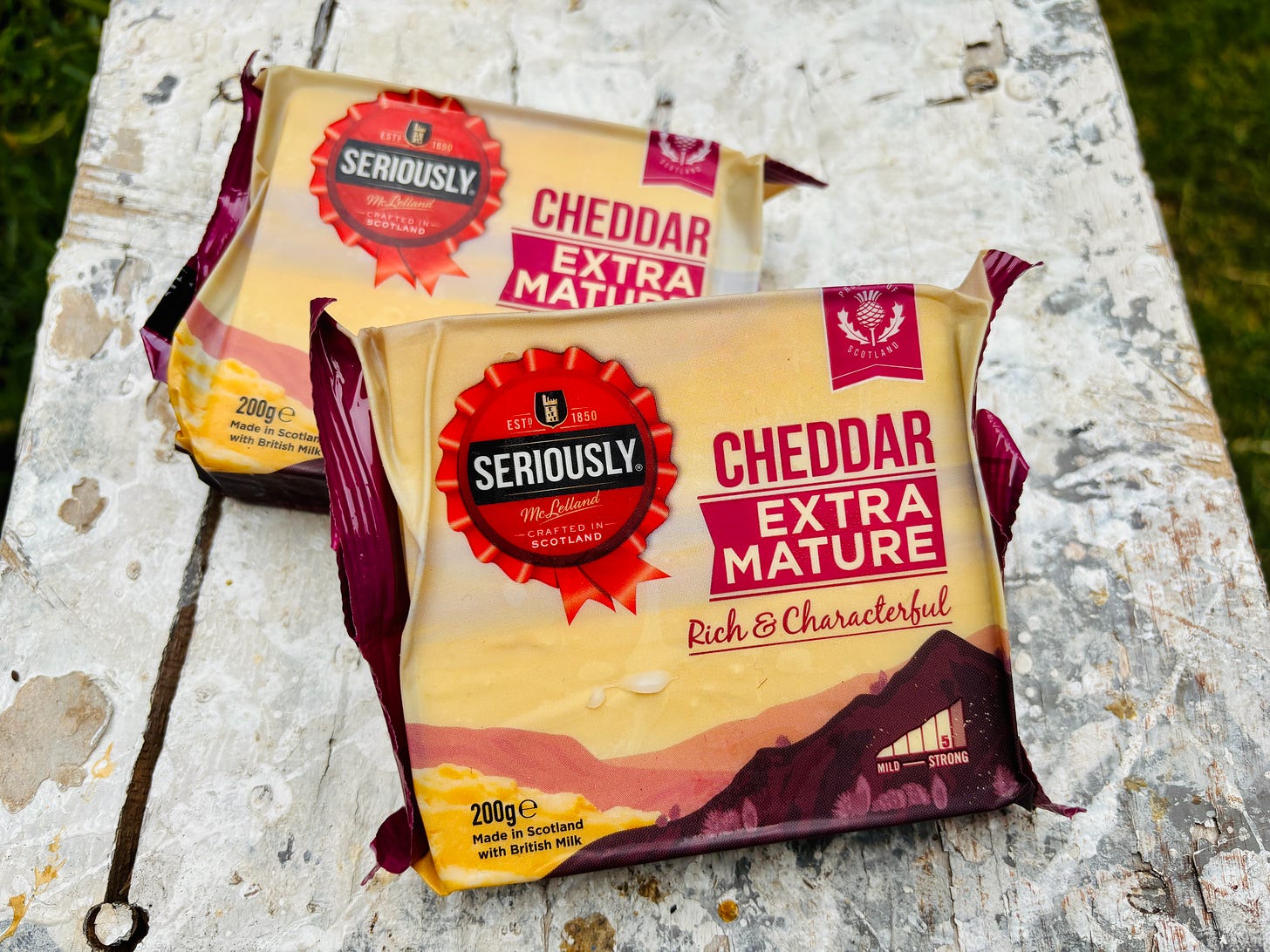
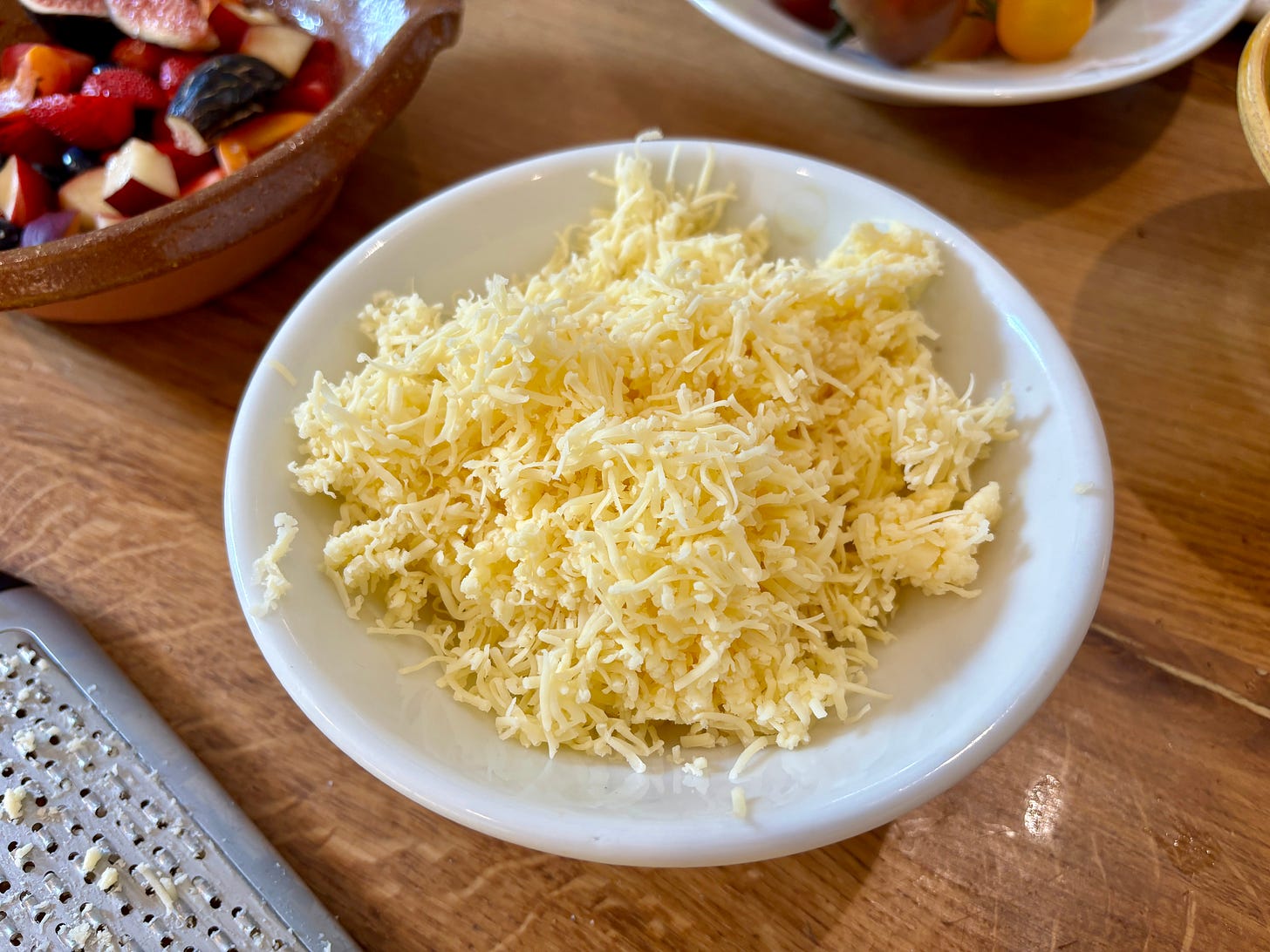
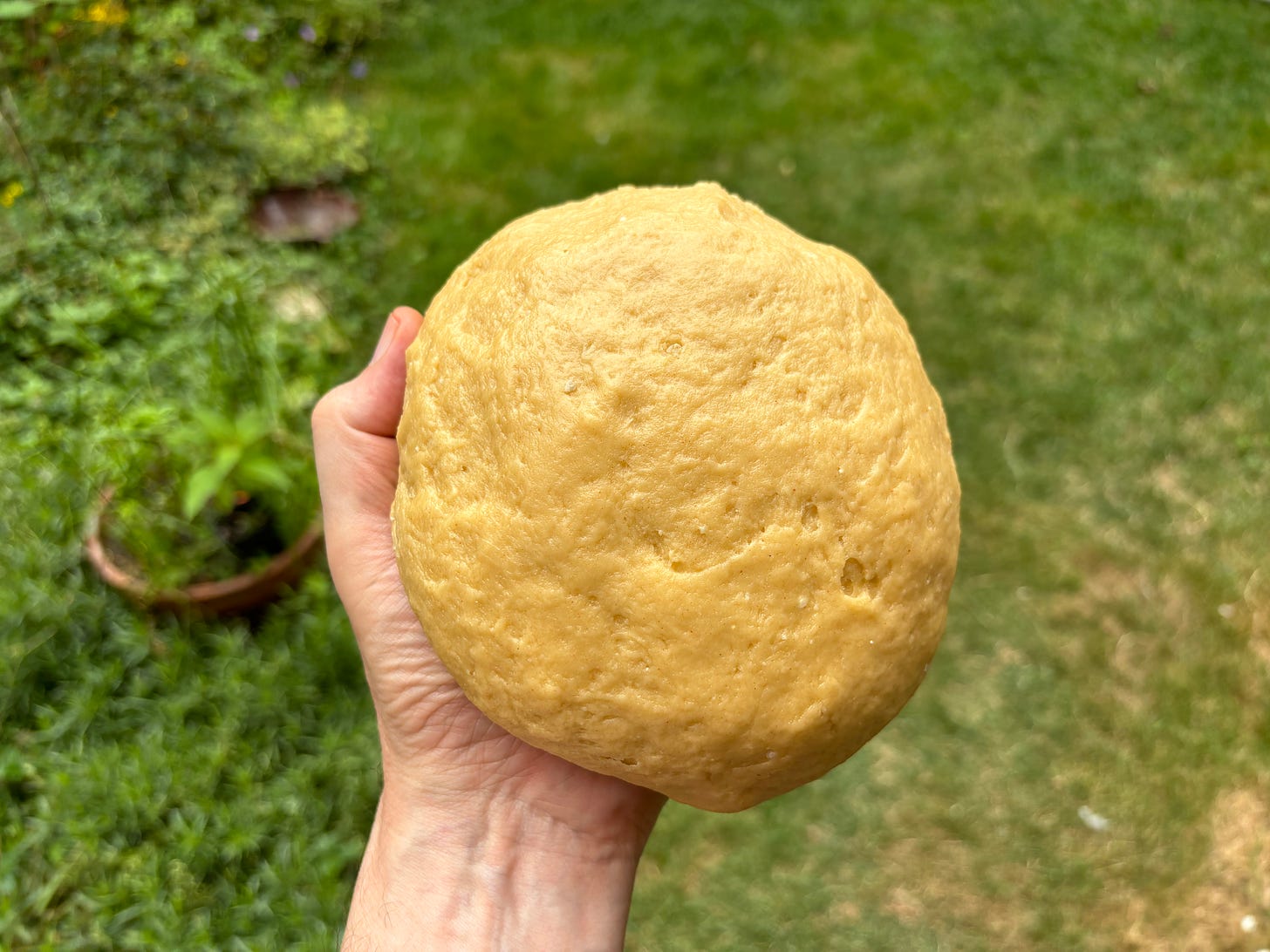
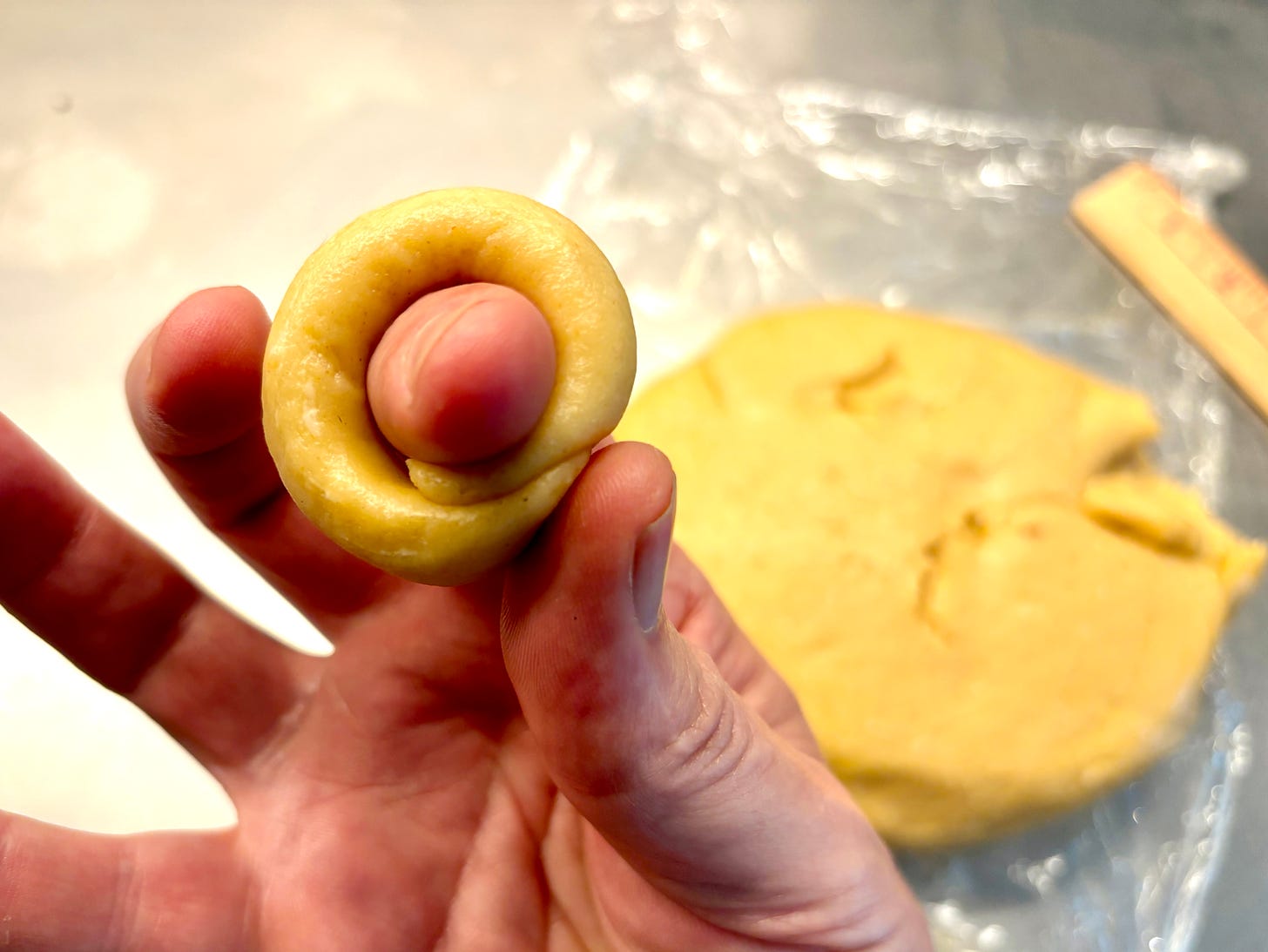
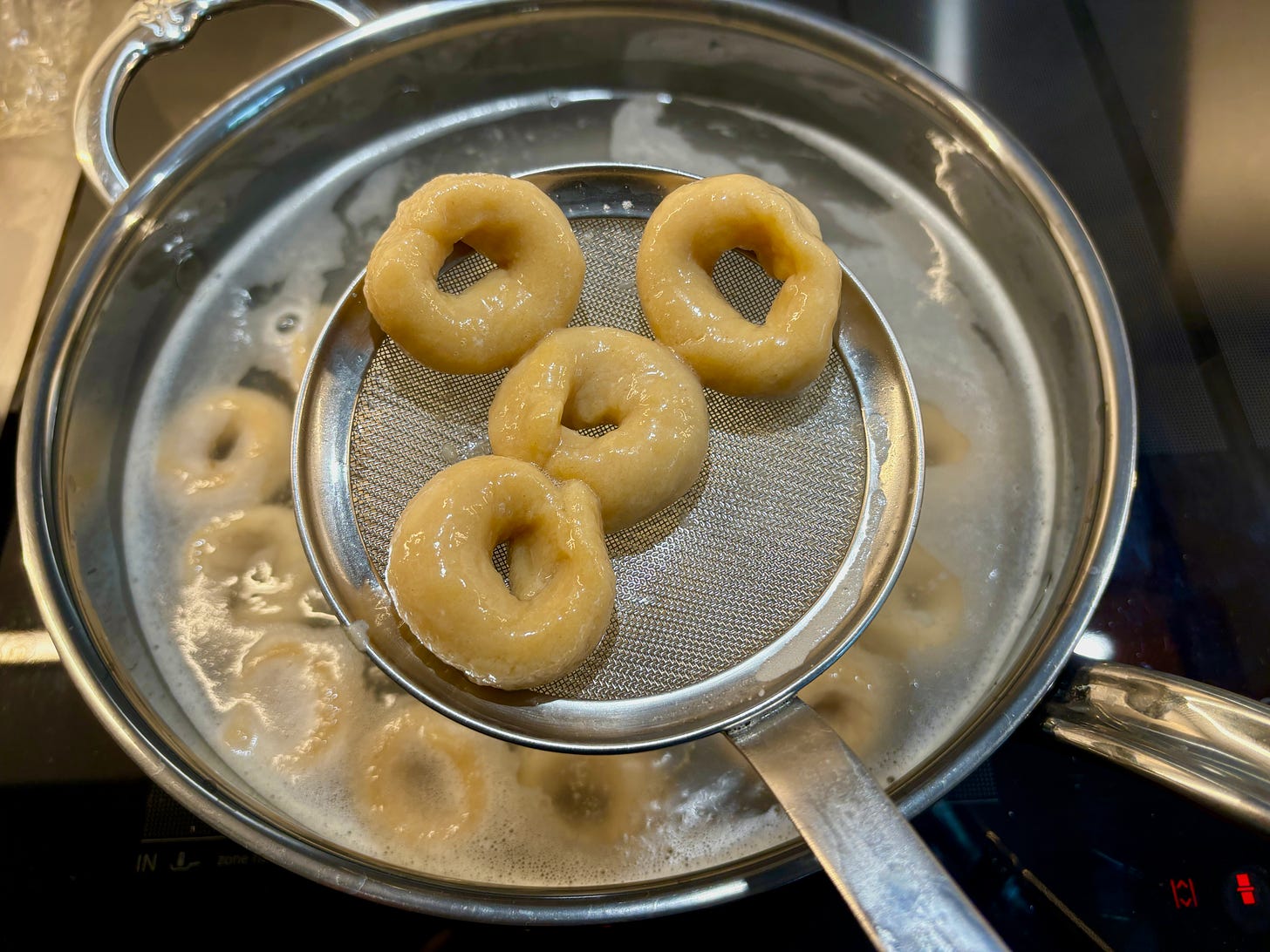
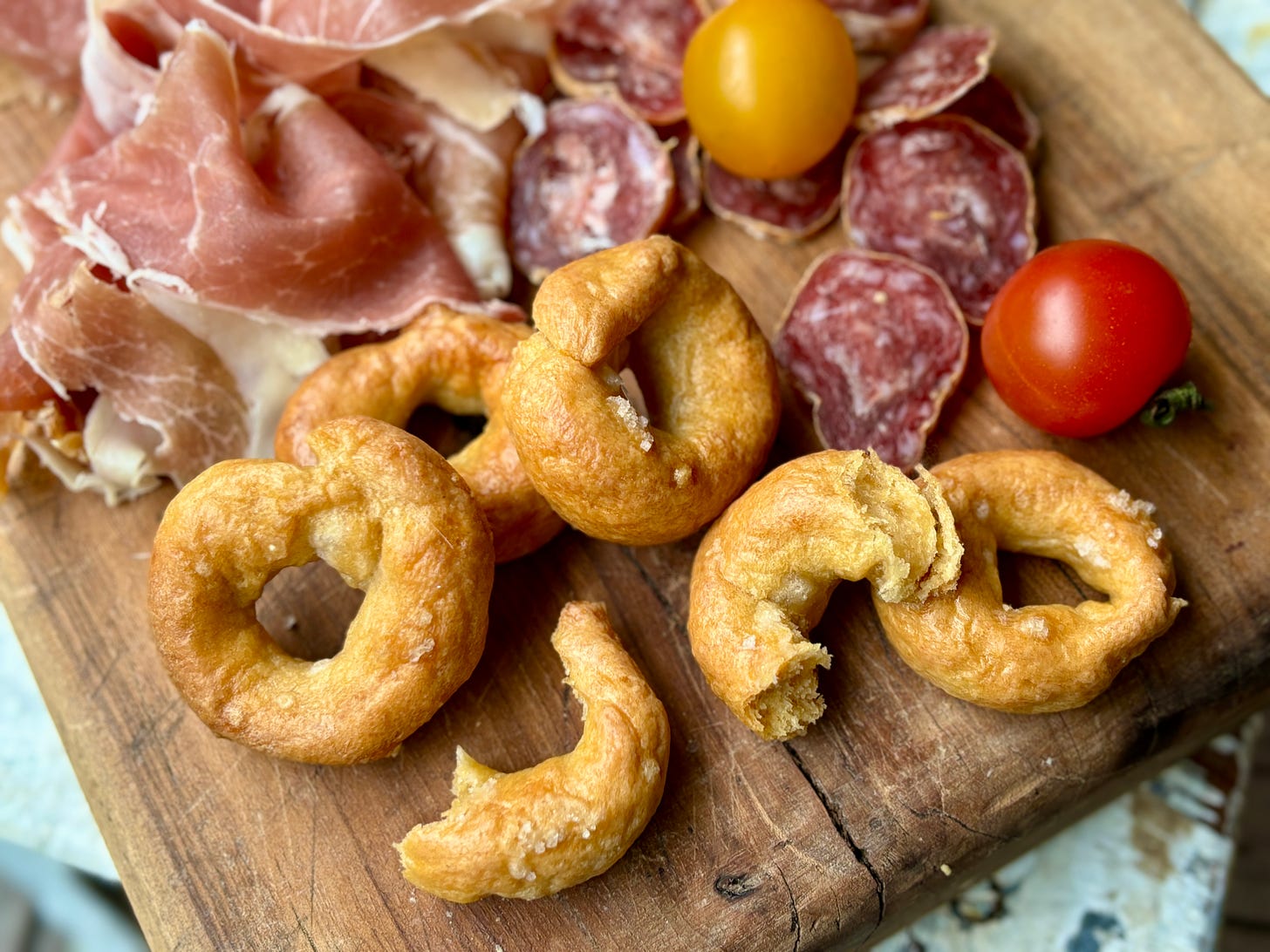
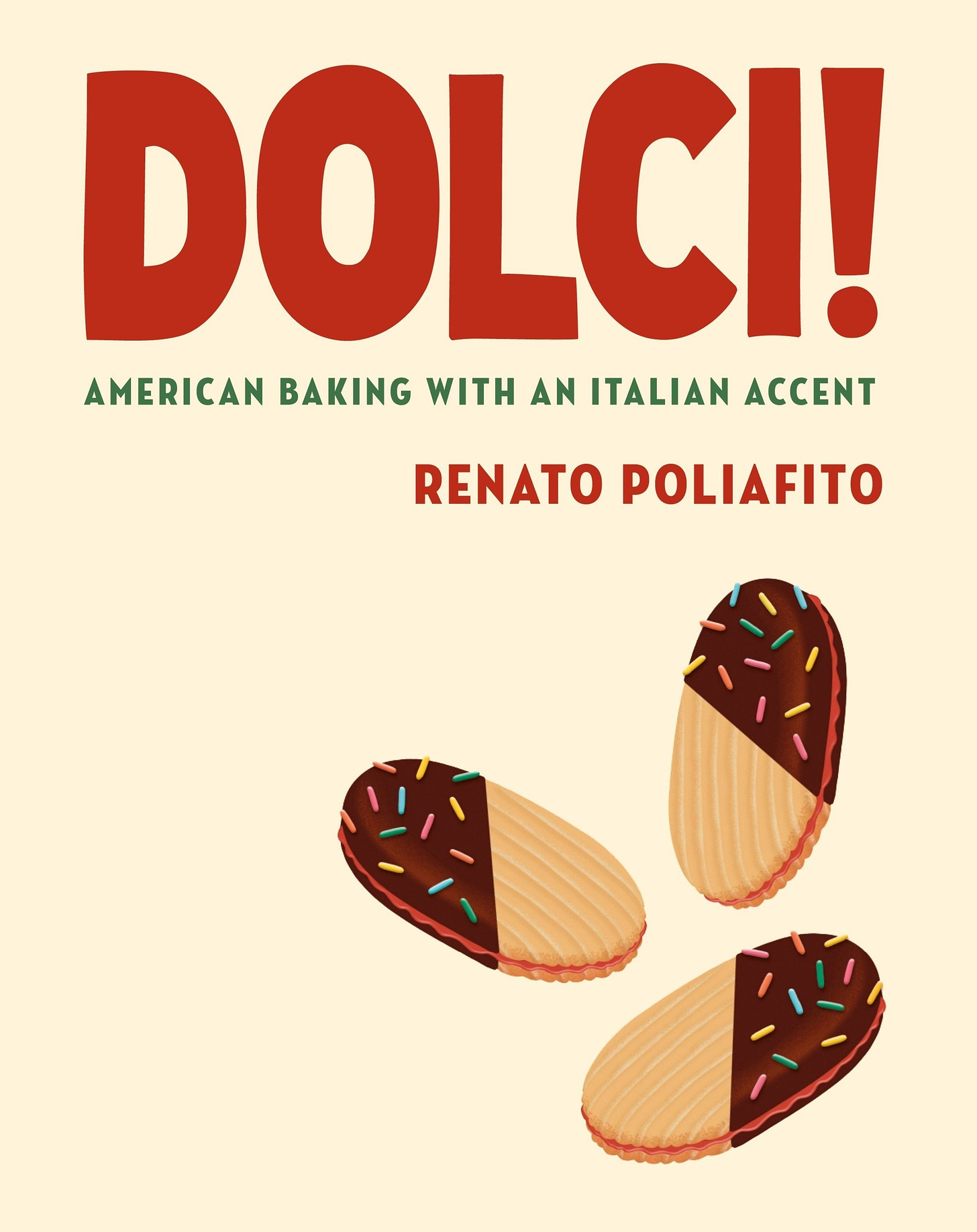


Being a Vermonter by way of Southern California I can attest to the excellence of Jasper Hill cheese - they have done so much to make our greatest product even better. Having a selection of so many good ones including some amazing cheddars from Shelburne Farms and Cabot, these taralli are on the list for today! I do find cheddars to be somewhat salty and might reduce the added salt, but still use some flaky to finish for texture. The availability of so many varied goat and cow cheeses somewhat makes up for the lack of ethnic food - we could hardly be more White (boring!).
Thank you for an interesting recipe, clueing us into a new book and more great writing. Life is indeed better with cheese…..
It’s coming on apple season here in West Michigan-and these look like a GREAT “go with” for sliced crisp apples…(and not so embarassing as Cheez-it’s)